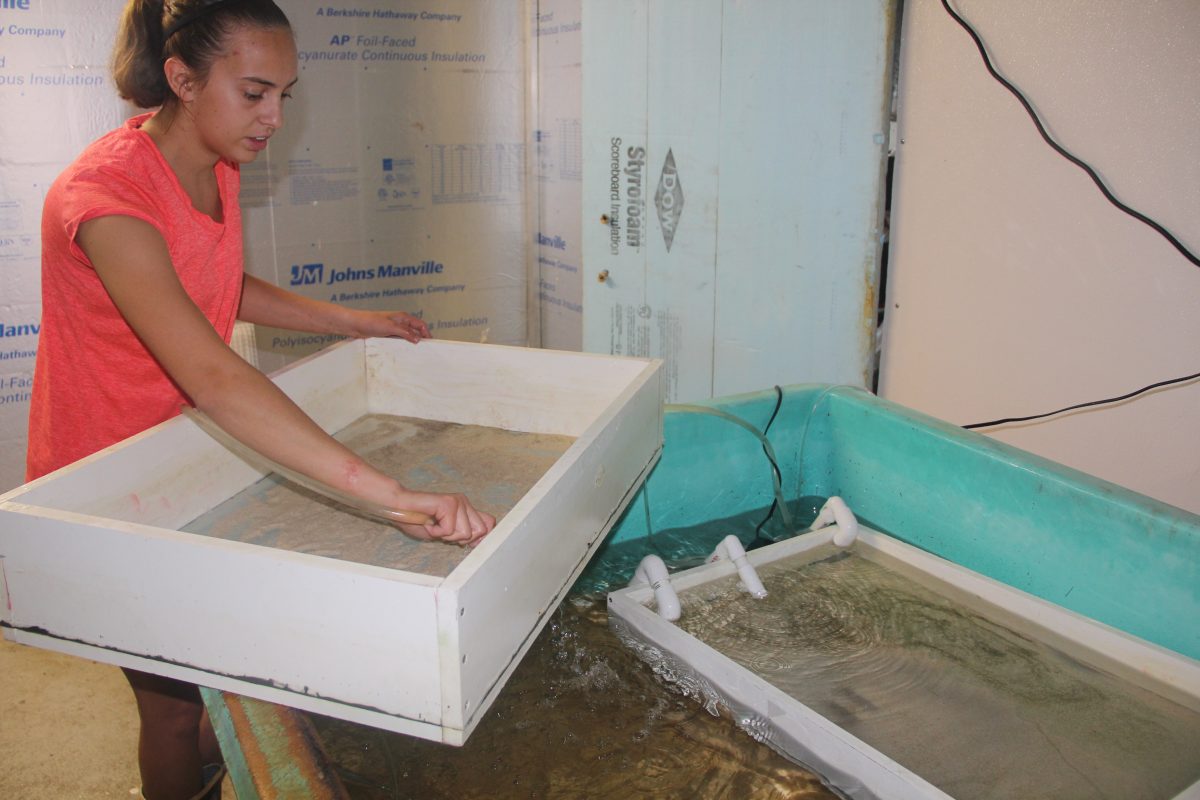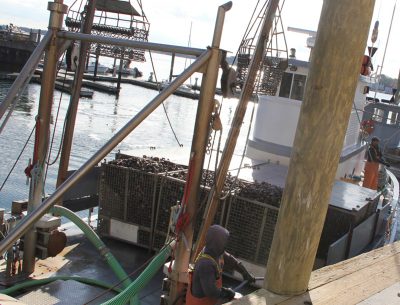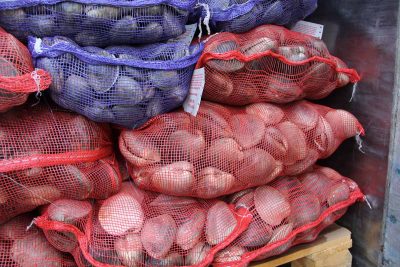
The Connecticut Shellfish Initiative, a multi-year effort launched in 2014 to promote the growth of shellfish beds and shellfishing by identifying and removing barriers to commercial and recreational harvesters and raising public awareness, has received the Northeast Sea Grant Consortium Superior Outreach Programming Group Award.
“This is a major group effort that involved the work of hundreds of people,” said Tessa Getchis, aquaculture extension specialist at Connecticut Sea Grant who led the initiative with Anoushka Concepcion, Nancy Balcom and Sylvain De Guise, all also of Connecticut Sea Grant, with Julie Rose of the NOAA National Marine Fisheries Service in Milford. “We had these really diverse groups coming together that hadn’t ever worked together before and we came up with innovative ways to solve problems.”
The selection was announced June 19 on behalf of the Northeast Consortium, which includes eight Sea Grant programs – Maine, New Hampshire, Lake Champlain Basin, Massachusetts Institute of Technology (MIT), Woods Hole Oceanographic Institute (WHOI), New York and Rhode Island, along with Connecticut. Supported by $344,609 in federal grants and state funds, along with many in-kind contributions of time and effort, the initiative was conceived as a direct response to needs expressed by shellfish companies, municipal shellfish commissions, regulatory agencies and groups interested in restoring natural shellfish reefs. The 30-plus member steering committee, comprised of commercial shellfishermen, federal and state regulators, habitat specialists, researchers, public health experts, recreational shellfishing representatives and others, guided creation of a plan of action that continues to be implemented. It was the first plan in 30 years targeting the state’s aquaculture sector, a $30 million industry that “was not as recognized and understood by the public as it should be,” said Stephen Goldschmidt, a steering committee member.
“The Shellfish Initiative was very valuable, because there was a lot of cross-pollination between sectors that had an interest in shellfishing,” said Goldschmidt, who is the former chairman of the Guilford Shellfish Commission.
Shellfish grower Steve Plant, another steering committee member, said the framework developed through the initiative is able to address new problems as they arise.
“The first thing we needed was for better communication between regulators and the industry, and that’s been fixed,” said Plant, who owns Connecticut Cultured Oysters in Mystic. “But this is a dynamic environment. Now we have a new popup – public concern about the growth of aquaculture. There’s a need for better public awareness.”

Harry Yamalis, environmental analyst at the state Department of Energy and Environmental Protection and steering committee member, said that because of the work of the Shellfish Initiative, the state is poised to undertake its first project to restore a natural oyster reef. As far back as 1998, Long Island Sound restoration plans have identified oyster reef creation as a critical step in improving the health of the estuary, but no action has been taken.
“It creates a whole community of organisms feeding off each other,” Yamalis said. Natural reefs also benefit commercial and recreational shellfishing by providing seed for the development of other new beds.
Getchis said the project is slated to begin as early as this fall with mapping to identify areas that would be most suitable for reef restoration.
Because the initiative created a vision plan for the shellfish sector, the many economic and environmental benefits of enhanced aquaculture in the state can be realized, said David Carey, director of the state Bureau of Aquaculture and a steering committee member.
“The CSI completed vision will improve the likelihood that shellfish play many important roles: economic, water quality, biodiversity, habitat services and shoreline stabilization, requiring the public, Legislature, regulators, industry, and conservation organizations to collaborate on strengthening the role shellfish contribute to the state,” he said.
Connecticut Shellfish Initiative accomplishments to date include:
• Eight new or expanded commercial shellfish operations
• Five new positions staffed or approved to address manpower shortages at the state Bureau of Aquaculture, which regulates commercial and recreational shellfishing.
• Establishment of an alternative leasing process, allowing commercial growers to access new beds.
• Research demonstrating the economic value of shellfish
• Completion of the Connecticut Seafood Survey to understand the public’s knowledge, perceptions and preferences to better inform marketing of shellfish and other seafood
• Creation of a shellfish management plan template for use by municipal shellfish commissions
• Education of the public about shellfish at 37 outreach events. These include community shellfishing days and festivals, tours of shellfish farms and community presentations about the state’s shellfish heritage and environmental benefits of shellfish.
• Support for research projects to resolve questions impeding the expansion of commercial shellfishing. One of these is testing water quality near the recently upgraded sewage treatment plant in Mystic to determine whether shellfishing can be permitted closer to the plant. Another is using GoPro cameras to document fish use of oyster cages as habitat. A third has determined the determined the critical water temperature that allows for the growth of Vibrio, a pathogenic bacteria, so that growers and regulators can better predict when the threat is greatest.
Getchis said the Shellfish Initiative will continue working to address new and emerging issues affecting shellfish and shellfishing in the state.

“We want to make sure that as aquaculture grows, it grows in a way that fits in the context of all the other uses of our busy estuary,” she said. “This is just the beginning of that conversation.”
Nancy Balcom, associate director of Connecticut Sea Grant, said that the recognition is very rewarding.
“Everyone involved should take pride in their contributions that lead to this award,” she said. “Every two years, the Northeast Sea Grant Consortium presents one group and one individual with outstanding outreach award, selected from any number of worthy programs through a peer-review process. While we all feel strongly that the Shellfish Initiative is an important and successful means for collaboratively advancing the growth and sustainability of the state’s shellfish resources, it’s nice to have this confirmed by our Sea Grant peers in this way.”